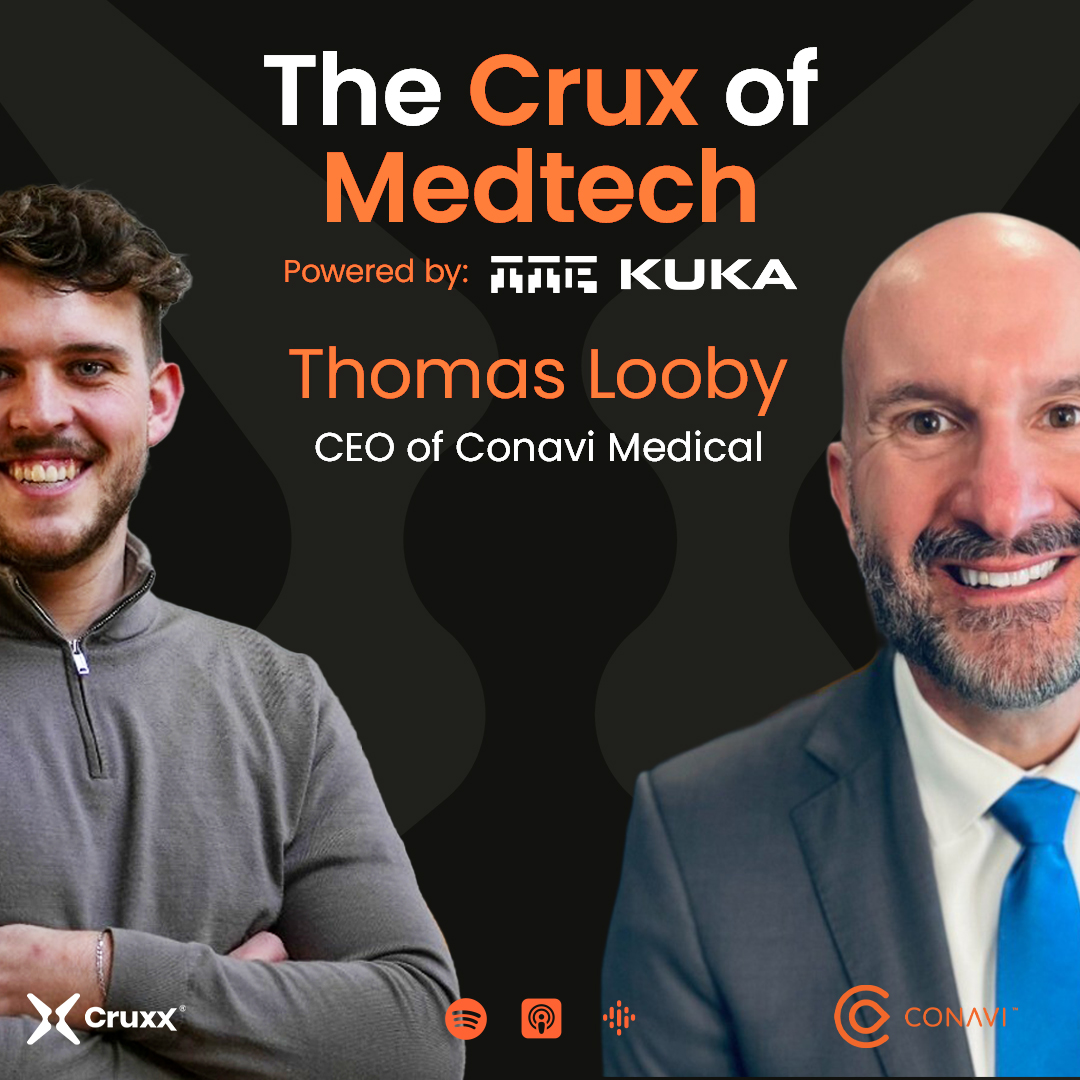On Episode 14 of The Surgibots Podcast I was joined by Noam Hassidov, the CEO of Tamar Robotics LTD, to talk about the advancements that the company is making in neuro robotics.
Dual-Modality Imaging That Rewrites PCI Outcomes with Thomas Looby
On Episode 14 of The Surgibots Podcast I was joined by Noam Hassidov, the CEO of Tamar Robotics LTD, to talk about the advancements that the company is making in neuro robotics.

On Episode 14 of The Surgibots Podcast I was joined by Noam Hassidov, the CEO of Tamar Robotics LTD, to talk about the advancements that the company is making in neuro robotics. He shared the latest updates from Tamar’s robotic system, as well as some of the challenges they’ve faced while developing it. Read on to find out more about life inside Tamar Robotics!
What are the challenges of developing a robotics platform in the neurosurgery space?
The major difference between laparoscopic robotics and neurosurgery robotics is the amount of space you have to operate in. The abdominal region has a much bigger cavity, so you can build big robots to perform surgery there. In the brain, that’s simply impossible. The surgical corridors in the brain are about 25 to 30 millimetres, which is a very narrow working corridor to preserve the brain in.
The second challenge is that you can’t move anything in the brain to access the part you’re performing surgery on. On top of having a small surgical corridor, you have to be far more precise with how much you take out. If you’re operating on, say, colon cancer, you can take five centimetres of extra tissue from each side of the cancer area, just to be safe. That is impossible in the brain, so you have to be very precise. If you take an extra three millimetres in the brain, you're going to have a problem.
When it comes to the robot itself, instead of coming to the patient with the robotic arms on each side, similar to how we eat at a table, you have to hold your hands close together to get through the smallest incision possible. We're keeping it very shallow. Designing a system like that enables us to enter through a very small corridor and then perform surgery deep inside the brain where the tumour is. It’s also difficult to give surgeons enough freedom at the tip of the robot to operate on golf ball-sized tumours through such a small corridor. How to open the arms up to allow for that is another challenge.
How are you overcoming those challenges?
We came up with an innovative solution called ‘Follow the Leader’. You can think of it like a vehicle. If you're driving a long truck and you're going in a roundabout, maybe the back wheels will move from the road or hit a little bit of the pavement. But, when you're driving a train, all the train is always keeping itself on track, to the millimetre. The Follow the Leader mechanism is the same. We’ve designed it to move like a snake whose whole body follows its initial path. We don't have the issue of elbows in our robotics, so we can avoid touching places which are prohibited in the brain.
When it comes to creating enough space and access for neurosurgeries, that was an interesting path. We understood that you cannot insulate the brain with high pressure CO2 like you do in oral surgery or in abdominal surgery. That’s one of the worst things that can happen in neurosurgery - everybody's fighting to reduce intracranial pressure. Then we we thought of mimicking what happens when you dig a tunnel. In the Mountain Railroad, for example, you have a machine that digs for 10 or 20 metres, and then you put concrete over the walls. You do that process again and again until you reach the right depth. We came up with an idea to do something similar. We let the robot and the user dig down to about 10 millimetres, then deploy a scaffold. Now, this scaffold doesn't generate expansion, but it will hold the volume so that you excavate tissue as necessary. That enabled the physician to work and expand the cavity without it collapsing.
What's the differentiator for Tamara robotics compared to other systems in the space?
Robots are impressive. It's an impressive industry, so we have a lot to achieve until we'll be at an industry level. What our competitors are doing is putting the vectors into the brain. So when you want to take a needle and do the biopsy, and you want to do it very accurately, or you want to take an electrical lead to stimulate the brain and you want to place it very accurately, you can put the patient to sleep, create a small hole and align the robot to do this needle insertion. But once you insert the needle, you’re in the end game. Those systems can be very precise, but they're not capable of removing a 42 millimetre golf ball sized tumour like ours can. They might be able to burn a 5 or 10 millimetre tumour, but it will be kept inside and then add to the pressure in the brain. They’re very good technologies, but they are limited.
To learn more about the work that Noam and the rest of the team are doing at Tamar Robotics, tune into Episode 14 of The Surgibots Podcast.

Dual-Modality Imaging That Rewrites PCI Outcomes with Thomas Looby

How to Survive FDA Battles and Boardroom Drama - with Sabine Bois